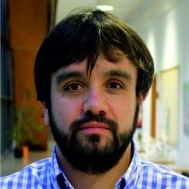Municipal Wastewater Treatment 2020
A special issue of International Journal of Environmental Research and Public Health (ISSN 1660-4601). This special issue belongs to the section "Environmental Science and Engineering".
Deadline for manuscript submissions: closed (31 December 2021) | Viewed by 8481
Special Issue Editors
Interests: CFD modeling; two-phase flows; experimental methods and instrumentation; modeling of sewage systems; monitoring; pollutants
Interests: planning and maintenance of hydraulic urban infrastructure; sewer processes; sediment transport modeling; experimental hydraulics
Special Issues, Collections and Topics in MDPI journals
Interests: urban hydrology; runoff and wash-off processes; sewer sediments; combined sewer overflows; imaging techniques
Special Issues, Collections and Topics in MDPI journals
Special Issue Information
Dear Colleagues,
Clean water, appropriate sanitation and good hygiene practices are essential for human development. Goal 6 of the Sustainable Development Goals (SDGs) aims to “ensure availability and sustainable management of water and sanitation for all”. In response to the global goals, UNICEF has developed a new Strategy for Water, Sanitation and Hygiene (WASH) that provides a framework to guide our work related to water, sanitation and hygiene over the next 15 years.
Sanitation is vital for public health, education and the economy. Although important improvements have been reached in recent decades, adequate municipal wastewater treatment conditions are not universal. The WHO/UNICEF Joint Monitoring Programme for Water Supply, Sanitation and Hygiene (JMP) 2017 update estimated that 61% of the global population in 2015 (4.5 billion people) lacked safely managed sanitation services. Among other problems, insufficient treatment of wastewater and fecal sludge spreads disease and is a driver of antimicrobial resistance. Besides this, demand for wastewater as source water and nutrients for agriculture is expected to increase in the coming years due to climate change, and water demand is expected to increase due to population growth. Considering the current and expected water stress and water quality problems, evidence is needed to design appropriate adaptation policies.
This Special Issue of the International Journal of Environmental Research and Public Health (IJERPH) will focus on the current state of knowledge on municipal wastewater treatment and sewage conveyance, including centralized and decentralized wastewater management strategies for small to medium communities. New research papers, reviews and case reports are welcome for this Special Issue. Papers dealing with new approaches to derive municipal wastewater treatment guidelines or risk assessment and management are also welcome. Other manuscript types accepted include methodological papers, position papers, brief reports and commentaries.
We will accept manuscripts from different disciplines, including sanitary engineering, hydraulic engineering, biochemical processes and pollutants transport in sewer networks, exposure assessment science, epidemiology, intervention studies, risk and health impact assessments, risk management in the area of municipal wastewater treatment and advanced treatments and technologies for the recycling and reuse of municipal wastewater.
Dr. José M. Carrillo
Dr. Juan Tomás García-Bermejo
Dr. Jose Anta Alvarez
Guest Editors
Manuscript Submission Information
Manuscripts should be submitted online at www.mdpi.com by registering and logging in to this website. Once you are registered, click here to go to the submission form. Manuscripts can be submitted until the deadline. All submissions that pass pre-check are peer-reviewed. Accepted papers will be published continuously in the journal (as soon as accepted) and will be listed together on the special issue website. Research articles, review articles as well as short communications are invited. For planned papers, a title and short abstract (about 100 words) can be sent to the Editorial Office for announcement on this website.
Submitted manuscripts should not have been published previously, nor be under consideration for publication elsewhere (except conference proceedings papers). All manuscripts are thoroughly refereed through a single-blind peer-review process. A guide for authors and other relevant information for submission of manuscripts is available on the Instructions for Authors page. International Journal of Environmental Research and Public Health is an international peer-reviewed open access monthly journal published by MDPI.
Please visit the Instructions for Authors page before submitting a manuscript. The Article Processing Charge (APC) for publication in this open access journal is 2500 CHF (Swiss Francs). Submitted papers should be well formatted and use good English. Authors may use MDPI's English editing service prior to publication or during author revisions.
Keywords
- municipal wastewater treatment
- decentralized systems
- sanitation safety planning
- safe use of wastewater, excreta and greywater
- sewage systems
- health benefits associated with municipal wastewater treatment
- infectious diseases
- climate change and municipal wastewater treatment
- wastewater for use in agriculture
- numerical modeling
- monitoring
- pollutants
- emerging contaminants
- chemicals
- microorganisms
- sewer processes
- sewage testing for COVID-19
- recycle and reuse advanced treatments of municipal wastewater







